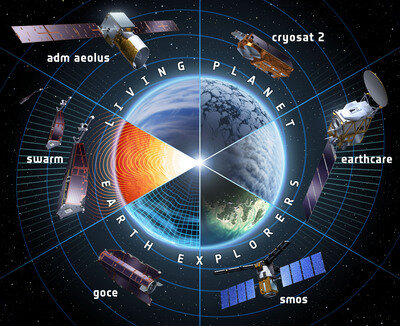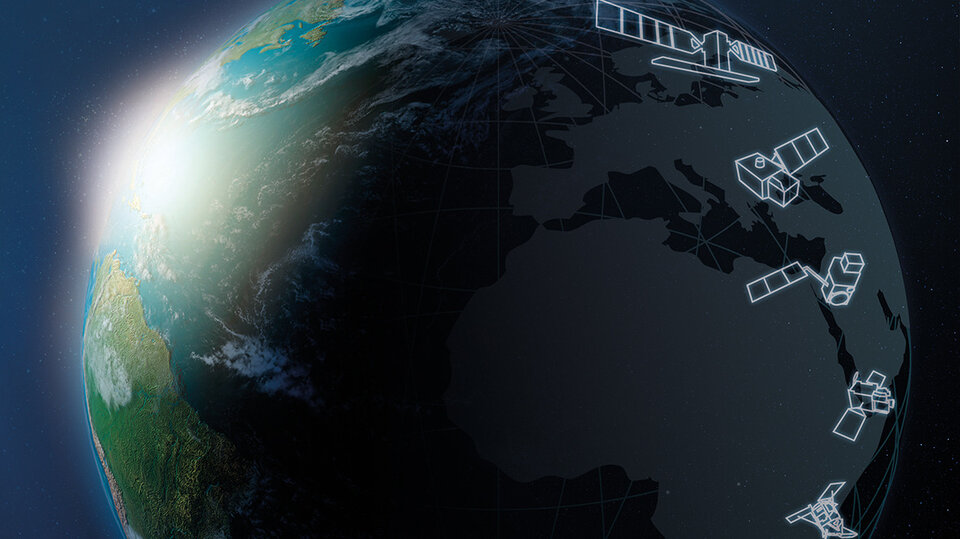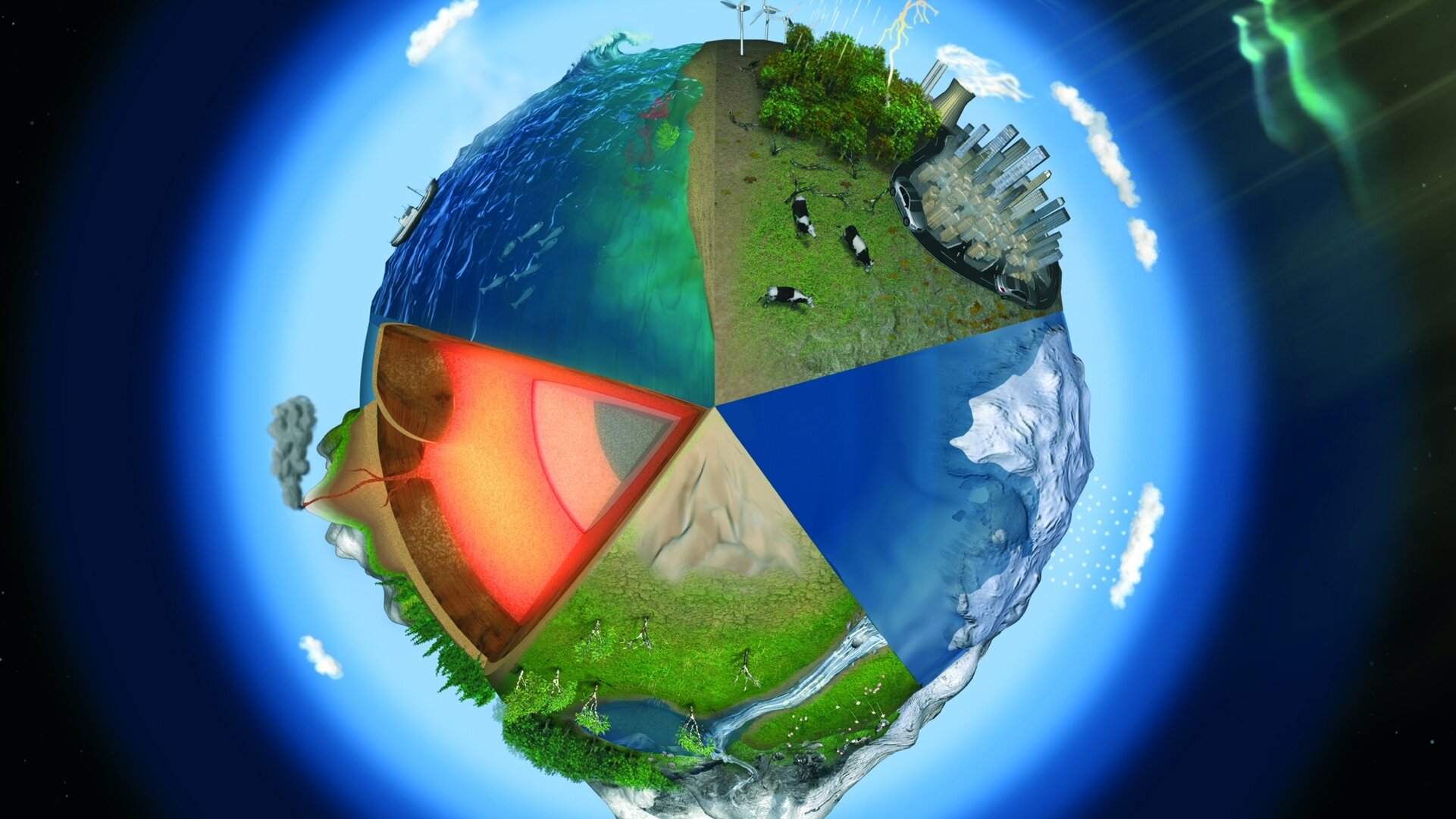Space for the environment: Space19+ proposals
Environmental concerns – especially climate change – are receiving more attention than ever. With the alarming conclusions from the Intergovernmental Panel on Climate Change, and increasingly common extreme weather events in Europe and beyond, people are demanding action on climate change and expecting the public sector to invest in addressing related issues.
Climate change has become a high priority item on the political agenda, and space agencies are now major contributors to the implementation of international agreements such as the United Nations environmental conventions and the Paris Agreement.
Taking place in Seville, Spain, on 27–28 November, Space19+ is the ministerial meeting that will define Europe's space efforts for the next few years. ESA Member States can cherry pick among the many proposals on the table according to national interests.


Access the video
The proposals benefiting the environment are not necessarily easy to identify. This is partly because Earth, along with its systems and processes, is immensely complicated; gravity and wind, for example, can impact weather predictions and climate models. Combatting poverty in general, or water scarcity in particular, are issues that may seem disconnected but are actually coupled with fighting climate change. So, as everything is connected and interconnected, this article will only provide some highlights to follow during the conference.
To address environmental issues, we first need to monitor our surroundings. ESA ensures European global leadership in observing climate change and developing and operating world-class science missions to enable sustainable development on Earth.

The importance of remote science via satellite is underscored by the fact that of the 50 Essential Climate Variables (ECVs) identified by scientists, 26 can only be monitored from space. ESA's contribution to the ECVs therefore provides very important data for the climate change community, including information on sea level rise and deforestation spanning a period of up to four decades.
Headed by the European Commission in partnership with ESA, Europe's ambitious and comprehensive Copernicus Earth observation programme is the most important component of Europe's endeavour to monitor the environment. Copernicus provides accurate, timely and easily accessible information that encourages environmental management through improving our understanding of climate change and how to mitigate its impacts. The programme consists of a growing constellation of satellites offering long-term coverage of the environment.
For Space19+, six high-priority missions have been put forward to expand Copernicus further:
- ROSE-L will provide information for monitoring forest type and cover in support of biomass estimation, as well as soil moisture, vegetation and land ice. The mission will automatically map and monitor sea and land ice, greatly helping climate change research.
- LSTM will enhance our understanding of – and response to – climate variability. With LSTM, water resources for agriculture and enhanced drought prediction services could be better managed. The mission will also contribute to monitoring permafrost areas which are forecast to be significantly affected by climate change. LSTM will enable better decision making, for example regarding urban heat islands: local authorities will be able to identify hotspots in the cityscape and introduce appropriate cooling measures such as vegetation and parks.
- CO2M will monitor carbon dioxide emissions related to human activity for the first time, equipping the world with a carbon dioxide monitoring and verification support capacity.
- CRISTAL will provide unique measurements of sea ice thickness and overlying snow depth, thus covering three critical climate change indicators: ice sheet variability, ice cap melting and sea level rise.
- CHIMEwill measure Earth's surface characteristics to support monitoring, implementation and improvement of a range of policies in domains ranging from polar observation and biodiversity to environmental degradation and hazards.
- CIMR will provide continuous monitoring of sea ice concentrations and sea surface temperatures.

Outside of Copernicus, ESA aims to further our understanding of Earth sciences by developing other dedicated missions:
- By measuring radiation emitted by Earth, FORUM will provide new insight into the planet's radiation budget, promising to improve climate models and therefore climate prediction.
- TRUTHS will provide benchmark measurements that improve our ability to estimate the radiative imbalances underlying climate change. Reference datasets from TRUTHS will be used to calibrate other satellite sensors, such as those carried on the Copernicus missions and the emerging constellations of small satellites.
- The proposed Arctic Weather Satellite is a prototype for a future constellation of weather satellites to monitor the polar regions, providing long-term datasets to study climate change in these vulnerable locations and to improve global Numerical Weather Predictions models.
- ALTIUS will provide important data for the atmospheric modelling community, including a detailed profile of stratospheric ozone.
Interesting future missions may also arise from the open-ended Scout missions. These small research missions are open to proposals from academia and industry and can be rapidly implemented outside of the cycle of ministerial meetings.
But Space19+ will do more than observe the dramatic changes taking place on our Earth-ship.
With Space19+ funding, ESA will continue to conduct R&D and pioneer innovative applications to support the United Nations' Sustainable Development Goals, identify and mitigate environmental threats, and enable society at large to adopt space services and benefit from the masses of open data now available.

ESA is ready to take an out-of-this-world approach to disposing of human-made objects in space, as well as extending their lifetime. The Active Debris Removal/ In-Orbit Servicing (ADRIOS) mission will seek to kick-start in-orbit servicing for launched satellites as well as removal of potentially dangerous space debris.
Many advances achieved through human exploration programmes have already enabled us to consume less water and develop higher yielding crops. And as space exploration targets move further from Earth, stricter limits are imposed on capacity, pushing us to develop improved recycling and life support systems that can be applied to life on Earth. Research associated with increased interest in a sustainable human presence out to the Moon and beyond to Mars will yield more sustainable technologies – for instance, ESA closed-loop life support system elements haves been recognised as top technologies for combatting climate change.
Additionally, continued funding into ESA's fundamental research activities will continue to contribute to our understanding of climate change. Recent studies include investigating how to complete the atmospheric sounding system with navigation systems and platform integrated sensors to benefit meteorological and space weather modelling and forecasting, and exploring the assimilation of lidar observations of aerosols for climate modelling and numerical weather prediction.
But the public sector will not solve environmental challenges on its own, so ESA is gearing up to further support budding European entrepreneurs or established businesses wanting to develop space technology or services that benefit European society and economy. Innovative environmental services, new technology and smallsats, are all examples of how private enterprise can be part of the solution.

ESA's optional industrial stimulation programmes are each attached to their respective space domains: commercial Earth observation is supported under InCubed+, navigation-related products and services under NAVISP, and satellite communication developments under Business Applications. In addition, the General Support Technology Programme supports early technology development.
Through such programmes, ESA supports non-governmental organisations and industry to develop relevant infrastructure, for example NAVISP aids the development of emission-reduction applications using satellite navigation with autonomous mobility on sea or land. So, if you have a technological solution for our planet using space, Space19+ may help you as well.
This article will be updated and complemented with the results of Space19+.
Follow @SpaceForEarth and #ESA4NGOs to keep updated on how space is used as a tool for humanitarian action.


